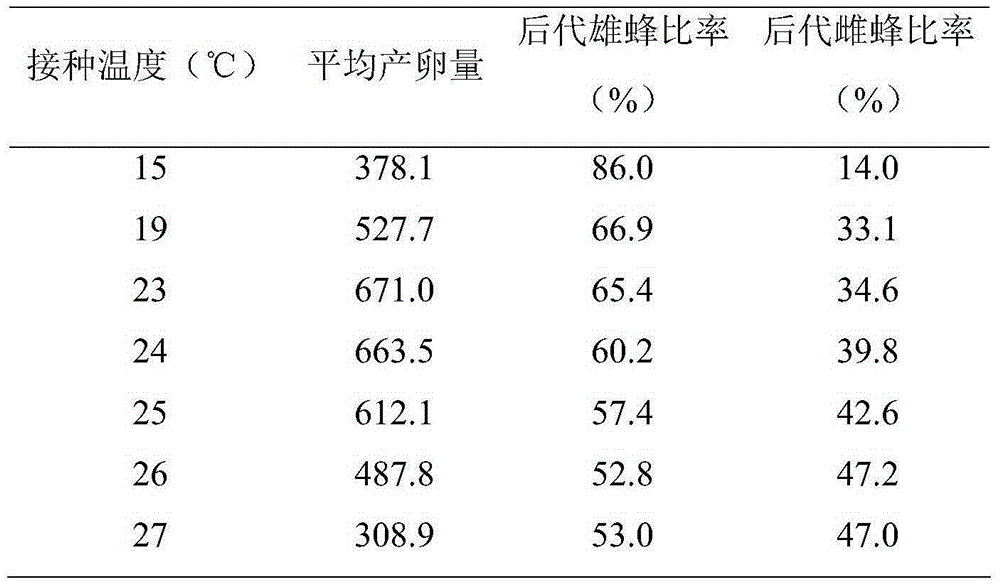A breeding method for increasing the proportion of female bees of the red-necked beetle
A technology of the red-necked brachypter and proportion, which is applied in animal husbandry and other fields, can solve problems such as inconsistency, and achieve the effect of expanding the number of female bees
- Summary
- Abstract
- Description
- Claims
- Application Information
AI Technical Summary
Problems solved by technology
Method used
Image
Examples
Embodiment 1
[0013] The host is an old Lygus nymph with a body length of about 2.8-3.2 mm and a width of about 1.4-1.6 mm. Put 50-100 such green Lygus nymphs into 1.2 liters of cylindrical insect culture boxes, and put into 3-4 pairs of red-necked wasps that have emerged for 2-5 days at the same time. The time of inoculation was 1 day. Put 2 fresh green beans, 8-12 fresh corns, and 2 moist cotton balls containing 10% honey water in the insect raising box. Put the cylindrical insect culture box on the glass insect culture rack in the inoculation room, let the light source upwards, and illuminate the bottom of the insect culture box through the glass. Cover the upper part of the insect culture box with a black cloth and seal it with a rubber band. Adjust the temperature in the inoculation room to 22-24°C, and turn on the lights for 14 hours a day.
[0014] After the inoculation was completed, the parasitoid wasps in the insect-raising box were removed, and the parasitized Lygus chinensis w...
Embodiment 2
[0016] (1) Select the appropriate host age for vaccination
[0017] Select 80 healthy, strong nymphs of Lygus nymphs with a body length of about 3.2-3.4 mm, and 3 pairs (3 males and 3 females) of red-necked wasps that have been eclosion for 3 days and put them into a round insect rearing box. (diameter 11cm, height 12cm). At the same time, 10 corn kernels, 2 green beans and cotton balls containing 10% honey water were put into the insect-raising box for feeding on Lygus nymphs and parasitic wasps. When inoculating, the insect rearing box was placed at 23°C, and the parasitoid wasps were allowed to inoculate for 1 day. The control light time is 14 hours.
[0018] Table 1 Effects of ages of Lygus nymphs on the sex ratio of parasitoids
[0019]
[0020] The preferred body length of the present application is 2.8-3.4 mm.
[0021] (2) Select the appropriate temperature for parasitoid breeding
[0022] The inoculated Lygus nymphs were transferred to the pupation box and cont...
PUM
 Login to View More
Login to View More Abstract
Description
Claims
Application Information
 Login to View More
Login to View More - Generate Ideas
- Intellectual Property
- Life Sciences
- Materials
- Tech Scout
- Unparalleled Data Quality
- Higher Quality Content
- 60% Fewer Hallucinations
Browse by: Latest US Patents, China's latest patents, Technical Efficacy Thesaurus, Application Domain, Technology Topic, Popular Technical Reports.
© 2025 PatSnap. All rights reserved.Legal|Privacy policy|Modern Slavery Act Transparency Statement|Sitemap|About US| Contact US: help@patsnap.com


